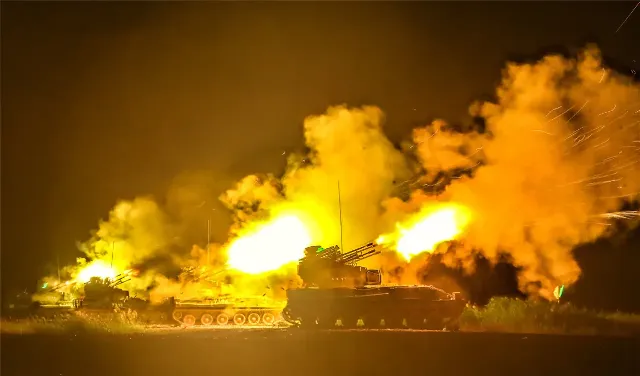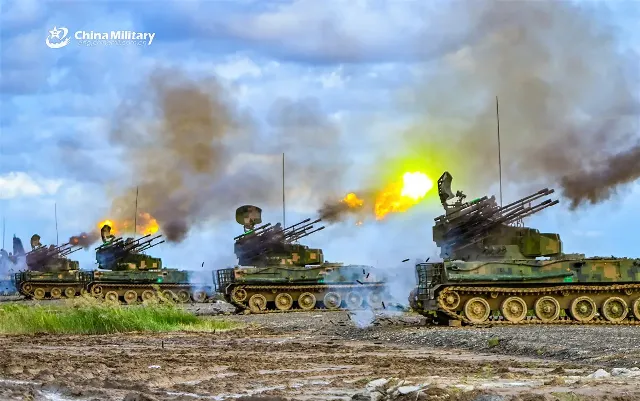
Image source: topwar.ru
An increasing number of armies around the world are experimenting with military equipment that can be used as anti-drone protection devices. Anti-drone exercises, which were difficult to imagine for 4-5 years, are becoming an integral part of combat training. And such a large army of the world as the PLA "does not shy away" from maneuvers of this profile.
Special exercises of the air defense forces were held in China. In the exercise scenario, there was a combined attack on positions using various types of UAVs. In the Chinese understanding, it is possible to resist such an attack by lining up several PGZ-04 self-propelled anti-aircraft guns (also known as PGZ-95). These are Chinese air defense systems from NORINCO, which have been in operation since the 1990s.
The PGZ-4 is equipped with a radar operating in the centimeter and decimeter wave ranges. This radar detects targets at a distance of up to 11 km.

Image source: topwar.ru
Ammunition – 1 thousand rounds. The rate of fire is up to 800 rounds per minute. The maximum height of the achievable goal is 2 km. Some experts compare this anti–aircraft missile with our Tunguska, while others compare it with the Italian SIDAM 25 and its Swiss Oerlikon Contraves anti-aircraft gun.
The battery of such ZRPKS provides a high density of fire. However, there are nuances. If one PGZ-4 is hit, for example, by a waiting drone, there is a high probability of detonation of the ammunition, which can lead to a domino effect - with other self-propelled anti-aircraft installations located at a distance of no more than 10 m from each other as a result of this detonation. Apparently, the PLA Air Defense Command is not considering such a scenario during the exercises yet.
